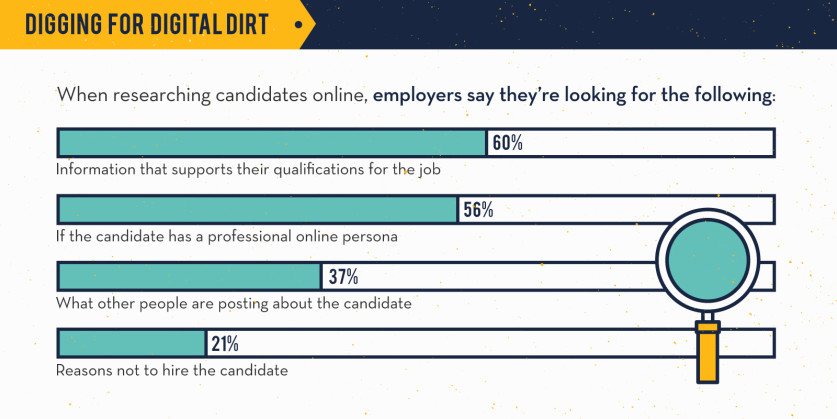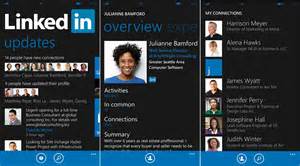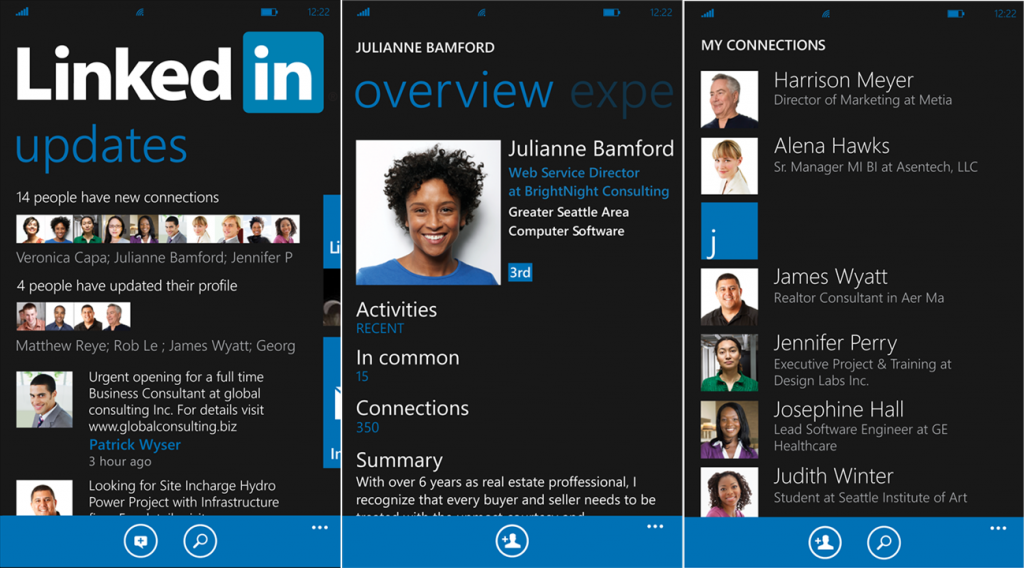
by Fronetics | Feb 8, 2016 | Blog, Content Marketing, Marketing, Strategy

Enticing potential customers with exclusive, high-value offers is an important component of lead nurturing and lead generation.
Your strategic marketing objectives boil down to one basic mission: to generate a high volume of quality leads. This will drive tomorrow’s revenue and an increase in sales and profits. Yet, only one in 10 marketing professionals feel they have an effective lead-generation strategy in place.
Since a productive lead-generation campaign consists of many interconnecting layers, it can be hard to pinpoint what is limiting your success. But, if you are seeking more leads for your business (and who isn’t?), consider these proven tactics for achieving successful lead generation.
First, for tactical reasons, your overall campaign must contain these components:
- Something To Offer. An offer is content that is perceived to be high in value. Offers include ebooks, whitepapers, free consultations, product demonstrations, or discounts.
- A Call to Action. This is either a small paragraph of text, an image, or a button that links the potential customer to a landing page to download what you have to offer.
- An Awesome Landing Page. This is a specific page designed to allow the potential client to download your offer.
- Forms to Gather the Lead Info. Essentially, they get the download; you get their contact information.
These four valuable components set the stage for capturing exponentially more lead information than ever before to grow your business.
Creating the Most Inspiring Offers
Just because you have identified leads does not mean they will convert to customers. Lead nurturing helps build a relationship with your potential customers, gain their trust, and raise their awareness about your business and products. The four steps above are critical to the lead nurturing process. But, unless you offer something that your potential customers want, you will not get past the first one.
So, what entices people to click “yes” to an offer?
The majority of us want anything that is considered exclusive, scarce, or in high demand. Suddenly, something becomes more desirable if it appears like we are getting the scoop on a special deal or valuable information.
The higher the perceived value of your offer, the more irresistible it becomes. So, whether your offer is whitepapers, downloads, free trials, memberships, or sales promotions, these irresistible elements can overcome a lead’s typical friction, doubt, or concern.
The elements to creating a feeling of exclusivity and special value in your offer include:
- Limited-time offers. This creates scarcity to your offer.
- Limited quantities. What you are offering is unique and has exclusive value, and procrastination may mean missing out.
- “X number of people have seized this offer.” Human nature is to follow what others do. State how many people have downloaded your offer or benefited from your information to encourage others to do the same.
- Content that matches current news trends. Content tailored to whatever is trending in the news (or to whatever is in high demand at the moment) is more relevant and relatable to potential customers, who are likely engaged with those trends in other ways as well.
- A title that hooks interest. People actually do judge a book by its cover and will not want to see more if you bore them.
- Several Call to Actions, offered at different stages. Pursue buyers at different levels of readiness with different CTAs. People often do their own research before even engaging with a sales rep, and every prospect is at a different stage of exploration. Develop different offers at different stages in the buying cycle, and include a primary and secondary CTA to these offers on various pages throughout your site.
- Avoid professional jargon. Terms and phrases that have been over-used and abused are meaningless and won’t hook potential buyers. They include: groundbreaking, cutting-edge, scalable, flexible, and robust, just to name a few.
To further ensure enticing more leads, your offer should provide something that is considered of high-value. Not all offers are created equal. Some “formats” perform better than others at converting leads. Here are a few of the top-ranked offers, in order of performance, when it comes to generating leads:
- E-books or guides
- Templates or presentations
- Research and reports (e.g., State of Inbound Marketing)
- Whitepapers
- Kits (multiple offers packaged together)
- Live webinars
- On-demand videos
- Blogs (including offers in the nav or sidebar)
- Blog posts (if there is a CTA in the post)
There are many more ways you can capture successful leads and fine-tune your marketing plans in a way that turns leads into customers. For more proven tips, download The 30 Greatest Tips & Tricks That Will Change The Way You Nurture Leads, which offers dozens of other techniques marketers should follow to increase leads and revenue.
Download guide
Related articles:

by Fronetics | Feb 3, 2016 | Blog, Content Marketing, Marketing, Social Media

A blog post not only stays around longer than a print ad, it can better engage potential customers.
The 24-hour news cycle has evolved into the 24-second news cycle with the rise of online media outlets and social media. So, when it comes to advertising your business, generating leads, making sales, and being perceived as a thought leader, you must consider the lifespan of your print ad and its purpose, versus the lifespan of a well-orchestrated blog and its potential.
Though often confused, there is a distinct difference between advertising and marketing. With a print ad, you are obviously advertising your business concisely, with a limited number of words and images. But, this form of advertising has a limited lifespan (only as long as that piece of print media is in the hands of a reader). So, it should be only one small piece of your marketing puzzle.
In contrast, a blog bridges advertising with progressive marketing techniques. It reaches your target demographic in a different way by conveying knowledge and building trust. It works on improving your “image” as well as branding your company as a thought-leader. A blog makes a more personal connection with the reader, while an ad is very obviously trying to sell something — and consumers gravitate toward knowledge rather than a simple sales pitch.
Looking at Longevity
A blog can live on indefinitely. What you post today may still be relevant and a popular read several months from now. Because of this, your company can reach a larger number of consumers within its target demographic for a long period of time, surpassing a print ad’s capacity for results. A blog also reaches consumers in a more relevant, memorable way. Marketing experts would agree: Getting your clients or customers to remember you is half the battle.
Your company’s advertising can include the placement of an ad in print media like newspapers, magazines, or direct mail. Print ads through community newspapers or direct mail flyers are useful for specific purposes, like targeting customers in a localized area.
But, you will find that advertising of this kind comes with a sizable price tag and has limited benefits. According to a Marketing Profs digital report, print advertising ranks as the largest expense of most marketing plans, with public relations and marketing strategies rounding out the important trio.
So how long will a print ad live? According to a marketing study published by Fast Company, a newspaper ad has a maximum lifespan of 2-3 weeks, and an ad placed in a monthly magazine may live up to three months.
In contrast, when a blog post goes live, it may generate the most hits within the first week, but it will continue to serve as available content that consumers will access for months, or even years, down the road. If the blog is well constructed, you may find that a year later it is still ranking in the top five search results for certain targeted long-tailed keywords.
So, it is important to consider the “quality of life” of your blogs and print ads. A blog feeds consumers’ need for more information before they commit. In fact, prior to contracting your services or buying your product, your potential customers will research the topic online and read blogs posts that present information in a vendor-neutral format.
Successful businesses react to this by creating a constant stream of this fresh content, organized into a library of posts (that stand the test of time), then use that content as bait to attract potential prospects. One study revealed that when it comes to blogs, the combination of proper timing and useful insight can result in a 33% higher lead conversion rate and a 38% increase in revenue over the prior year.
Blogs’ Benefits and Social Media
When you publish a print ad, you’ll never really know what your readers think about it. With a blog, you get feedback and you engage the reader, who is also a potential customer. It creates a more viable connection and provides greater insight that you can leverage to garner more customers through:
- Tracking and analytics: Feedback is a powerful tool. Google Analytics can tell you what types of articles are capturing your readers’ attention. You can learn how much time they spend on a page and how they share it. You can leverage this information to determine what sort of content you need to create to reach more customers and generate more leads.
- Shares and comments: Readers love to interact with online content, reading and commenting to express their opinion or thoughts. The comment section of your blog can become a community of readers. If a reader found your blog insightful or inspiring, they may also share it with their contacts or friends through social media. Your business becomes a part of a larger community that is connected through dialogue.
Advertising in any form, digital or print, is only a single component of any complete, multi-level marketing process. Innovative marketing today must include several different components, like well-articulated blog posts that utilize SEO, and connect potential customers to your company by offering information they can use. Blogs are a long-lasting porthole to your business, the product or the services you offer, and your professional insight or vision.
Related articles:

by Fronetics | Jan 27, 2016 | Blog, Leadership, Marketing, Social Media, Strategy
Should employers be monitoring or censoring employees’ social media?
 Censorship is always a hot-button issue, and, when combined with social media, things can heat up even more. The topic is debated in law school classrooms, at dinner parties, and in courtrooms. What should be shared and written on social media? Should companies censor what their employees post?
Censorship is always a hot-button issue, and, when combined with social media, things can heat up even more. The topic is debated in law school classrooms, at dinner parties, and in courtrooms. What should be shared and written on social media? Should companies censor what their employees post?
The waters still seem murky. Many companies don’t have policies around social media, but, with over 70% of online adults using Facebook, and the Internet-crazed Millennial generation now outnumbering Baby Boomers, they should look into putting some guidelines and policies into place.
Who’s Digging?
Many companies, up to 60%, now research candidates according to Career Builder. Up to 48% of companies who have researched candidates have found reasons not to hire them. According to the site, reasons range from provocative photos, references to drug or alcohol use, badmouthing a former employer or colleague, poor communication skills, and discriminatory comments.

Source: Career Builder
A New Generation
Although the retiring workforce does use the Internet (46% of those 65+, and 65% of those between ages 50-64), their numbers cannot compare to users in the younger, upcoming workforce (90% of those between 18-29).
The Millennial generation was born and raised in the digital age. Many of them have never heard of the Dewey Decimal System or know a life before cell phones. Their digital devices, and the Internet, have been their best way to research and connect. They are accustomed to throwing political views, photos, and personal experiences — good or bad — out into the cyber world. Many have already had the experience of poster’s regret, which might have taught them a lesson, but may also have blunted the idea of permanent mistakes. If one can delete a post and apologize, why not post away and worry later?
To Monitor or Not Monitor, That is the Question
Thinking carefully about what your expectations are of employees, and addressing those expectations in writing, is an important step to consider.
We assume that most employees know they shouldn’t post anything that damages the reputation of the company, its products, and employees, but it may be best not to assume. A case study in a recent Harvard Business Review provides a perfect example of what can happen if policies aren’t put into place.
In his Time piece, “Why Monitoring Employees’ Social Media is a Bad Idea,” author S. Kumar argues that while monitoring candidates might make sense, monitoring current employees breeds a suffocating and intrusive atmosphere:
“By allowing workers to live their personal lives without intrusion, smart businesses can make a powerful statement; namely, that they accept them for who they are, treasure their professional contributions to the company, and want them to be happy and fulfilled outside as well as inside the office. This, in turn, would inspire loyalty and boost productivity in the workforce, and make those companies more profitable.”
However you feel about the topic of monitoring, and even censoring, it’s important to be clear with employees about expectations. A general statement about employee behavior and representation of the company might be enough to instill deeper forethought when employees post, comment, and like.
Do you monitor your employees’ social media accounts? Do you have a policy in place that covers personal social media activity?

by Fronetics | Jan 21, 2016 | Blog, Marketing, Social Media
The LinkedIn Mobile App can help you grow your marketing program from the comfort of your phone.

Increasingly people are on the move, and smart phones are on the rise. In 2015, 64% of adults had a smartphone, up from 35% in 2011. Worldwide there are 3.7 billion unique mobile users. Those numbers are growing rapidly.
With the rise of mobile access and technology, people use phones in many of the same ways they use computers. You can scan, email, write, research, talk, bank, and — thanks to the LinkedIn Mobile App — apply for jobs, post articles, communicate, and engage with peers.
LinkedIn believes the app is “a faster way to tap into your professional world. Get news and info that matter for your professional day, a daily brief on what’s happening in your network, and a quick way to reach out and keep in touch.” Sounds good for those of us who rely heavily and increasingly on our phones.
Here are some ways in which you should be using the LinkedIn Mobile App to help your marketing efforts:
1. Update
A cornerstone of inbound marketing, writing updates and engaging daily (or hourly) with connections is important. Within an update you can include text, links, and photos and mention other LinkedIn members. You can also choose to share your update with your entire LinkedIn network and/or first-degree connections and/or your Twitter feed.
2. See who’s looking
Discover who has viewed, liked, or commented on your profile and content. The app lets you reply directly if you’d like.
3. Engage
Keep up with your network by finding, commenting, liking, and sharing. Repeatedly, we hear of the importance of engaging with connections and truly trying to value their posts, especially before sharing your own agenda.
4. Edit your profile
Notice a mistake on your company profile? Make an immediate change, even without your computer. Maybe you’re at a business meeting or out to dinner, and you notice that something hasn’t been updated on your company profile. You can fix it immediately.
5. Send & receive messages
This is a staple, and one that is critical. Again, if you’re at a business meeting, at a conference, or just without your computer and you need quick access to someone who you don’t have in your smartphone address book, you can find them and contact them through the LinkedIn Mobile App.
You can also access Lynda.com to watch tutorials and get training, get daily updates from LinkedIn Pulse, use LinkedIn Lookup to find connections, and use LinkedIn SlideShare to access over 18 million tutorials, infographics, and professionals.
There’s no need to cease connecting or marketing when you’re without your computer. The newly updated LinkedIn Mobile App can help you get the job done efficiently.

by Fronetics | Jan 20, 2016 | Blog, Content Marketing, Marketing, Strategy
Grow your business with this 12-step guide to creating a content marketing strategy.

So, you’ve decided to give content marketing a go, but you’re not sure where to start. Or, maybe you have tried implementing some of the basic principles but haven’t had much success with your piecemeal approach.
Either way, without a documented strategy in place, you’re much less likely to reap the potentially enormous benefits inbound marketing can offer.
In fact, only 11% of companies without a documented content marketing strategy find their efforts to be successful, compared to 60% of companies with a strategy in place. And that number rises to 86% when the company designates someone to lead the strategy. The numbers speak for themselves.
Fronetics Strategic Advisors has developed a 12-step guide to developing a content marketing strategy specifically tailored to your business. This eBook provides insight into what makes good content, as well as tried-and-true measures your company can take to get the most out of your marketing efforts. By following these recommendations, you’ll be well on your way to developing a strategy that drives profitable customer action and helps you meet your business goals.

Related articles:
When it comes to marketing we work with our clients to create and execute strategies that drive success and elevate their brand position within the industry. Unlike other firms, we align marketing programs with business objectives and, through a data driven approach, are able to deliver results with a targeted ROI. Our team is comprised of strategists, marketing professionals, writers, designers, and experts in social media. Together we leverage our experience to increase brand awareness, position our clients as thought leaders, drive meaningful engagement with prospects and customers, and help businesses grow. Learn more about what we do.

by Fronetics | Jan 18, 2016 | Blog, Content Marketing, Marketing, Strategy
Improve your content marketing strategy in 2016 by following these six tips.
We know that content marketing is a highly effective tool for companies of all shapes and sizes, be they B2C or B2B. (If you’re not using inbound marketing, here are five reasons why you should be.) But, considering this strategy takes considerable time, effort, and resources, are you getting the most out of your efforts?
Long gone are the days when a weekly blog and vague presence on social media will cut it — 2016 is calling for a diversified content marketing strategy that speaks to today’s sophisticated consumer base.
Here are 6 ways to improve your content marketing strategy in 2016:
1) Be mobile-friendly.
Google announced in May 2015 that the number of searches on mobile devices has now surpassed those conducted on desktops in the US. And we know that reality isn’t limited to personal Internet use. Evidence suggests B2B buyers are increasingly using mobile devices to do research, make inquiries, and purchase products. If your website isn’t mobile-friendly, your company is missing out the significant share of customers who demand mobile-optimized content. What’s more, Google now penalizes non-mobile sites in searches, meaning your website will fall further below the fold, as more companies cater to smartphone screens.
Here’s how to make your supply chain website mobile-friendly.
2) Diversify your content.
A blog for which you provide regular, original content is an excellent start . But, unfortunately in this day and age, it’s not enough. Offering content in different formats provides a richer experience for your leads, adds depth to your brand identity, and allows you to reach and connect with more consumers. There are a dizzying number of options out there, including podcasts, slideshares, videos, graphics, ebooks, and whitepapers, to name a few. Choose a couple that fit your brand best, and see where they take you. Which leads me to…
3) Do video.
Video is not just for funny cats and cover artists anymore — it’s the most popular form of content being consumed online. YouTube is the second largest search engine in the world, with more than one billion users conducting over 3 billion searches per month. What’s more, the number of videos uploaded to Facebook has increased by 94% over the last year, with more than 50% of Americans who use Facebook daily viewing at least one video per day. Some brands have capitalized on this trend. (See the Budweiser puppy commercial, viewed over 30 million times.) But there is a lot of potential there for businesses in all industries — a little creativity and some time and effort adding video to your content marketing suite could really pay off.
4) Tug at the heartstrings.
There’s a reason the Budweiser puppy video has enjoyed so much success: we love a feel-good story. An ad that evokes strong emotions makes us associate those feelings with the brand. Studies show that emotions play a leading role in B2B purchases, too, and your content marketing should leverage that idea by telling great stories and by promoting the value you offer. Content that tells a great story connects people to your brand on an emotional and intellectual level, helping earn their trust and loyalty. Similarly, by touting figures that illustrate the value your company offers its customers — like money saved, convenience, or top-of-the-line performance — you remind people what it is you can do for them. And there’s no better way to win hearts (and leads) than reminding them what they’ll get out of your relationship.
5) Focus on relationship marketing.
HubSpot identifies relationship marketing as the #1 game-changing marketing trend to tackle in 2016. While this term largely falls under the CRM umbrella, it can play an important role in your content marketing strategy as well. Providing existing customers with custom-tailored content and information shows that you understand their needs, and it makes communications infinitely more personal. You’re not just blasting out some mass communication that ignores the facts that you know about your client — for example, a mass email titled “Baby it’s cold outside!” to a client based in Florida. Modern technologies like geo-targeting and CRM software make personalizing content and communications much easier, but it will still take extra time and resources. That’s the (absolutely worth-it) cost of long-term, loyal customers earned through relationship marketing.
6) Seek professional help.
Even if you’re part of the 58% of companies that handles content in-house, a little help from the experts will only improve your results. Hiring an SEO-savvy copywriter, for instance, can impact your bottom line. Or working with a firm like Fronetics can help you develop and execute a content marketing strategy designed to grow brand awareness and to meet your specific business goals. Here are six other digital and content marketing tasks to outsource. A fresh perspective from outside your company may be just what your marketing efforts need to excel in 2016.
Related articles:
When it comes to marketing we work with our clients to create and execute strategies that drive success and elevate their brand position within the industry. Unlike other firms, we align marketing programs with business objectives and, through a data driven approach, are able to deliver results with a targeted ROI. Our team is comprised of strategists, marketing professionals, writers, designers, and experts in social media. Together we leverage our experience to increase brand awareness, position our clients as thought leaders, drive meaningful engagement with prospects and customers, and help businesses grow. Learn more about what we do.











